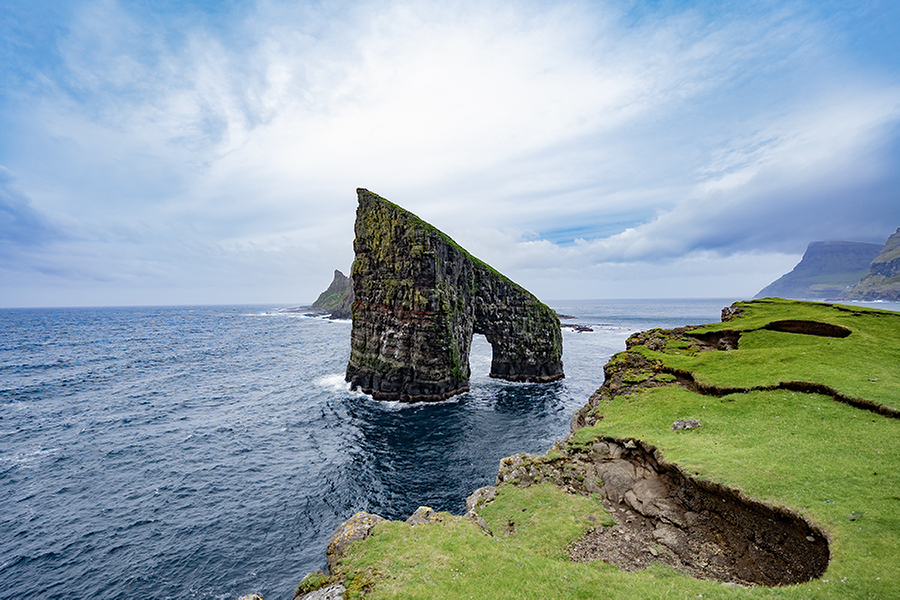Do you have any clients thinking of visiting Europe?
Here are some tidbits about Denmark taken from The Travel Institute’s newly updated Northern Europe course.
Denmark is home to one of Europe’s most engaging capital cities, København. The city’s sumptuous architecture, delightful pedestrian streets lined with fine shops and cafés, and unique attractions, such as Tivoli, make it a highlight of any trip to Northern Europe. On top of that, the city’s cultural offerings, including jazz, opera, and ballet, are among the world’s best.
A very busy cruise port, København nearly always is included in the numerous Baltic Sea cruises that also call at the other Scandinavian capitals and St. Petersburg, Russia. The city also is a departure or return point for cruises to Norway’s fjord coast. In addition, many cruises following a general itinerary of Western or Northern European highpoints call at København.
Beyond København
But Denmark also contains scores of attractive smaller cities and villages, many offering beautifully preserved medieval castles, Viking ruins, and quaint half-timbered or yellow-washed houses. The country’s many islands offer opportunities to hike or bicycle through pastoral landscapes and nature preserves. Here are a few of Denmark’s memorable locations:
Aarhus
Aarhus, Denmark’s second-largest city, is located in Jylland and is more than 1,000 years old. It has been an important seaport since Viking times. Its Den Gamle By (Old Town) is an open-air museum of 75 half-timbered houses brought in from around Denmark and reassembled to form a historic town with its own bakery, silversmith, and other services. Elsewhere in the city is Vor Frue Kirke (Church of Our Lady), with a finely carved medieval altar and a basement containing the 11th-century crypt of the city’s original cathedral. The Vikinge-Museet (Viking Museum), located in a bank basement, contains artifacts from a Viking village that was excavated in 1964. Items from Danish prehistory till the end of the Viking age are displayed in the Moesgaard Prehistoric Museum, an indoor/outdoor facility located south of the city. On view is the “Grauballe Man,” a very well-preserved, 1st-century-B.C. corpse, which was found in a bog.
Færøerne (Faroe Islands)
The Færøerne (Faroe Islands) are a group of islands in the North Atlantic Ocean southeast of Iceland and north of Scotland. The population of the Faroes is descended from the Norwegian Vikings who pillaged the British Isles for much of the 11th century. Most accommodations and restaurants are in Tórshavn, the island’s largest town. The Faroes are particularly interesting to nature lovers, anglers, and bird watchers, who come to observe the seabirds that nest on the west and north coasts. Air and sea transportation to the island can be sporadic, but daily air transportation from København is available year-round. During the summer, there is frequent air service from Arhus and Billund. Atlantic Airways and SAS fly to the islands, or visitors can ferry there by the Smyril Line.
Funen Island
Funen is the name both of Denmark’s second-largest island and of the county that encompasses about 90 smaller islands. Funen’s undulating landscape of rolling hills, orchards, and picturesque farmlands, crisscrossed by bicycle paths, has given it the name “the garden island.” The island is linked to the Jylland peninsula by bridges and to Sealand by one of the world’s largest suspension bridges.
Odense, the largest city on Funen, is the birthplace of Hans Christian Andersen. Two homes where the author lived during his childhood are now museums filled with memorabilia: the HC Andersen Hus (HC Andersen House) and the HC Andersen Barnsdomshjen (HC Andersen Childhood Home). The city offers many other places of interest, including the 12th-century Sankt Knuds Kirke (St. Knuds Church), with its gilded altar carved with nearly 300 figures. Vor Frue Kirke (the Church of Our Lady) is the city’s oldest Lutheran church, dating to the 13th century.
Ribe
Ribe is Denmark’s oldest city, dating to the 7th century, and one of the country’s most important Viking trading centers. The town’s dominant landmark is Ribe Domkirke (Ribe Cathedral), which was completed in the 12th century. It is an impressive structure, with intricate relief work and a tall tower affording panoramic views of the surrounding countryside. The Old Town Hall, built in 1496, is the oldest town meeting place in Denmark. Today, it houses historical artifacts.
We hope you enjoyed this learning bite about the beautiful country of Denmark. Let us introduce you to The Travel Institute’s newly updated Northern Europe course, available now. The course is the first in a new three-part series for Europe and includes Scandinavia and The British Isles, both popular destinations for novices and seasoned travelers alike. By completing this course, travel professionals will gain specific sales and travel tips, niche market advice, sample itineraries, and more.



